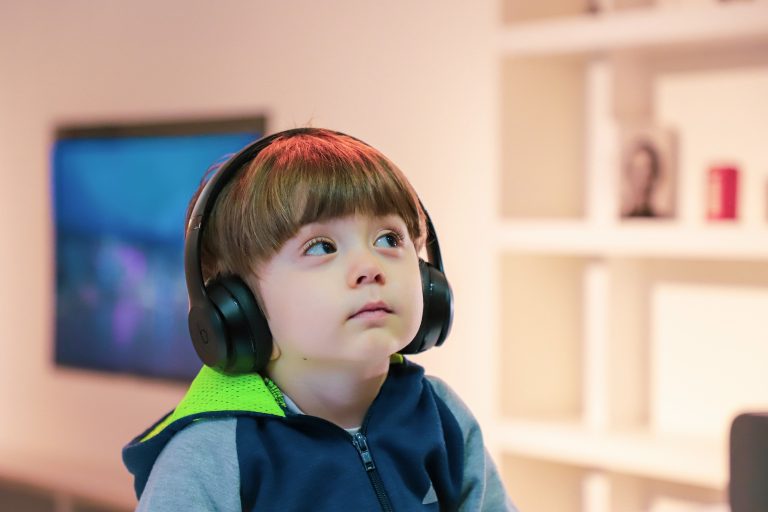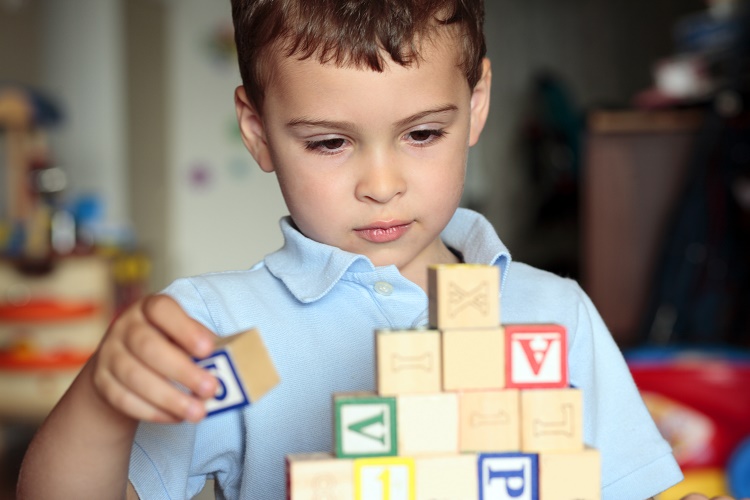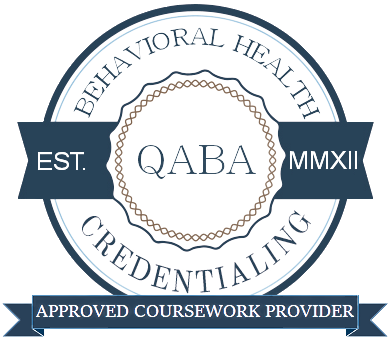How does autism affect education? For many parents, this question arises the moment their child starts school. Children with autism often experience unique challenges with attention, communication, and adapting to classroom routines. With guidance from professionals like special education teachers, speech-language pathologists, and occupational therapists, students with ASD can build skills that support their academic and social development. This article breaks down the key ways autism shapes the educational journey—and how to help.
A Comparison of Social and Academic Effectiveness Among Educational Settings for Children with Autism Spectrum Disorder
Autism Spectrum Disorder (ASD) affects how individuals learn, communicate, and interact socially. For parents, understanding how autism affects education is essential when choosing the right learning environment. This article compares public schools, private schools, and homeschooling in terms of social and academic outcomes for children with autism, using insights from parent surveys and expert strategies such as Applied Behavior Analysis (ABA).
Study Overview
A North Carolina-based survey included 161 parents of children aged 12–14 with ASD. Parents shared perspectives on the different school settings their children had attended. The aim was to explore how autism affects school performance and social development, and to evaluate the benefits and limitations of public, private, and homeschool options.
Challenges in Public Schools for Children with Autism
While public schools offer structured support under laws like FAPE and IDEA, they also present challenges that can act as learning barriers for students with autism:
- Lack of Individualized Support: Overcrowded classrooms limit teachers’ ability to tailor instruction. Students may struggle without sufficient one-on-one attention.
- Social Integration Difficulties: Limited peer interaction and weak social skills programs can cause social isolation.
- Limited Teacher Training: Many general educators lack autism-specific strategies, impacting their ability to support students effectively.
How ABA Helps in Public Schools
ABA therapy in public school settings can:
- Develop customized plans using Functional Behavior Assessments (FBA)
- Teach social skills through modeling and reinforcement
- Reduce disruptive behavior through evidence-based techniques
- Train teachers in behavioral strategies
- Modify environments to improve focus and reduce anxiety
Challenges in Private Schools for Children with Autism
Private schools often offer smaller class sizes and more curriculum flexibility. However, parents must still evaluate whether they truly address how autism affects education:
- Inconsistent Program Quality: Not all private schools follow standardized protocols for autism support.
- Limited Peer Inclusion: Some private programs segregate children with ASD, reducing chances for real-world socialization.
How ABA Helps in Private Schools
ABA therapy helps by:
- Implementing consistent behavioral programs
- Guiding inclusion strategies for structured peer interactions
- Offering oversight from Board Certified Behavior Analysts (BCBAs)
- Training staff to manage behavior and foster peer relationships
Considerations for Homeschooling
For families wondering, “Can a child with autism go to school—or is homeschooling better?”, this setting offers both benefits and challenges:
Benefits:
- Personalized learning pace
- Reduced sensory overload
- Flexibility to incorporate therapies like ABA and speech during the school day
Challenges:
- Risk of limited peer interaction
- High demand on parent time, skills, and planning
- Fewer in-built services unless coordinated externally
ABA services can be integrated into homeschool routines to ensure therapy goals align with academic learning.
Public vs. Private School for Autism: Key Differences
| Factor | Public School | Private School |
|---|---|---|
Cost | Free (FAPE/IDEA) | Tuition-based |
Teacher Training | Varies; limited autism training | Some autism specialists employed |
| Inclusion | Often integrated with neurotypical peers | May be separated or grouped |
Support Services | IEPs, speech, ABA (e.g., Medi-Cal funding) | Depends on the institution |
| Curriculum Flexibility | Standardized | More adaptable |
| Class Size | Larger | Typically smaller |
Parents weighing private vs public school for autism must assess individual child needs, therapy availability, and school capacity.
Read also: Can an Autism Diagnosis Be Removed?
Additional Public Support Options
- Free and Appropriate Public Education (FAPE): Ensures all children receive education suited to their needs.
- Least Restrictive Environment (LRE): Promotes inclusive classroom participation when feasible.
- Medi-Cal ABA Funding: Makes therapy accessible in public and private schools.
- CAPTAIN Program: Trains public educators in ABA for students with autism.
Read also: Autistic Signs in Toddlers, Young Kids, and School-Age Children
Frequently Asked Questions
How does autism affect education?
Autism affects education by influencing how students process information, interact socially, and regulate behavior. These factors can create obstacles in traditional learning environments without tailored support.
what is the main learning barrier for students with autism?
Common barriers include sensory sensitivities, communication difficulties, and a need for structure and repetition that traditional classrooms may not offer.
Can a child with autism go to school?
Yes. With the right support, children with autism can attend public, private, or even homeschool settings successfully. The key is aligning the school environment with the child’s unique learning profile.
What’s better: private vs public school for autism?
Each has pros and cons. Public schools offer free services and integration but may lack individual attention. Private schools offer more flexibility but vary in quality and cost. Assessing your child’s needs is crucial.
Is ABA helpful in school settings?
Absolutely. ABA helps children develop skills, manage behaviors, and thrive academically through structured, individualized interventions.
Conclusion
Choosing between public school, private school, or homeschooling is a personal decision, but it’s essential to consider how autism affects school experience. While there’s no one-size-fits-all solution, using strategies like ABA therapy can help children succeed regardless of the setting.
“People with AS are like saltwater fish who are forced to live in freshwater. We’re fine if you just put us in the right environment.” – Humphrey (2008)
Call to Action: Support Your Child’s Education Journey with Go Behavioral
At Go Behavioral, we help families navigate the complexities of autism and education. Whether your child attends public school, private school, or is homeschooled, our Board Certified Behavior Analysts (BCBAs) and team of professionals provide personalized ABA therapy and guidance tailored to your child’s needs.
Empower Your Child’s Educational Journey with Go Behavioral Services
At Go Behavioral, we understand the complexities of educating children with autism. Our team of experts is dedicated to providing individualized support and evidence-based interventions to help your child thrive academically and socially.
Contact us today at (888) 988-0520 to learn more about our services and how we can support your family’s educational goals.
References
- American Psychiatric Association. (2014). Diagnostic and statistical manual of mental disorders. 5th edition, DSM-5. Arlington, VA: American Psychiatric Publishing
- Autism Society (2011). About autism: facts and statistics. Retrieved from
- http://www.autism-society org/about-autism/facts-and-statistics html
- Boyd, B. A., & Shaw, E (2010). Autism in the classroom: a group of students changing in population and presentation. Preventing School Failure, 54(4), 211-219.
- Center for Disease Control and Prevention. (2014). Autism and Developmental Disabilities Monttoring (ADDM) Network. Retrieved from http://www.cdc.gov/ncbddd/autism/addm.html.
- Chamberlain, B., Kasari, C., & Rotheram-Fuller, E. (2007). Involvement or isolation? The social networks of children with autism in regular classrooms. Journal of Autism and Developmental Disorders, 37,230-242
- Eaves, I C., & Ho, H. H. (1997). School placement and academic achievement in children. with autistic spectrum disorders. Journal of Developmental and Physical Disabilities. 9(4), 277-291
- Ferraioli, S. J., & Harris, S. L. (2011). Effective educational inclusion of students on the autism spectrum. Journal of Contemporary Psychotherapy, 41, 19-28.
- General Assembly of North Carolina (2009). House Bill 443: Increase Class Size in the Public Schools. Retrieved from: http://www.neleg.ne/Sessions/2009/FiscalNotes/House/PDF/HFN0443v1.pdf.
- Humphrey, N. (2008). Including pupils with autistic spectrum disorders in mainstream schools,
- Support for Learning, 23(1), 41-47.
- Hurlbutt, K. S. (2011). Experiences of parents who homeschool their children with autism.
- spectrum disorders. Focus on Autism and Other Developmental Disabilities, 26(4), 239-249
- Kidd, T., & Kaczmarek, E. (2010). The experiences of mothers home educating their children with autism spectrum disorder. Issues in Educational Research, 20(3), 257-275.
- Lauderdale-Littin, S., Howell, E., & Blacher, J. (2013). Educational placement for children with autism spectrum disorders in public and non-public school settings: the impact of social skills and behavior problems. Education and Training in Autism and Developmental Disabilities, 48(4), 469-478
- Leon, H. Langill, CC, Peterson, CA, Luze, G. J., Carta, J. J., & Atwater, J. B. (2010). Children’s individual experiences in early care and education, relations with overall classroom quality and children’s school readiness. Early Education and Development, 21(6), 912-939.
- Merriam-Webster, Inc. (2014). Dictionary and thesaurus. Retrieved from http://www.merriam-webster.com/
- Kantrowitz, M. (2014). Characteristics of private vs. public schools. Retrieved from http://www.privateschools.com/private-vs-public.phtml.
- Nye, B., Hedges, L. V., & Konstantopoulos, S. (1999). The long-term effects of small classes: a five-year follow-up of the Tennessee class size experiment. Educational Evaluation and Policy Analysis, 21(2), 127-142.
- Reed, P., Osborne, L. A., & Waddington, E. M. (2012). A comparative study of the impact of mainstream and special school placement on the behaviour of children with autism spectrum disorders. British Educational Research Journal, 38(5), 749-763.
- Sofia, C. A. (2010). Bringing lessons from homeschool to the writing classroom. English Journal, 100(2), 98-104.
- Department of Education, National Center for Education Statisties. (2009). Characteristics of public, private, and Bureau of Indian Education elementary and secondary teachers










